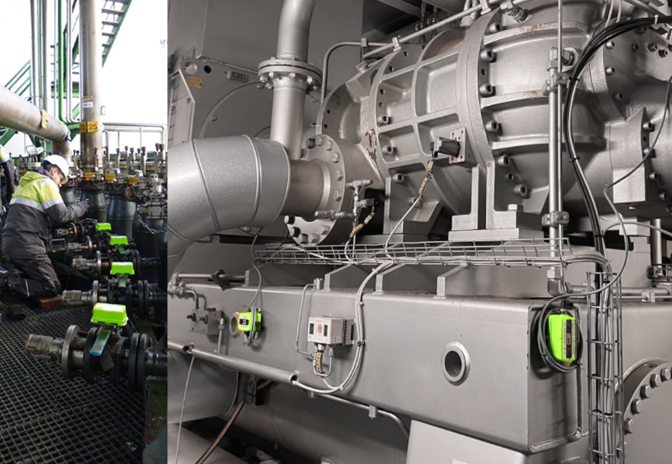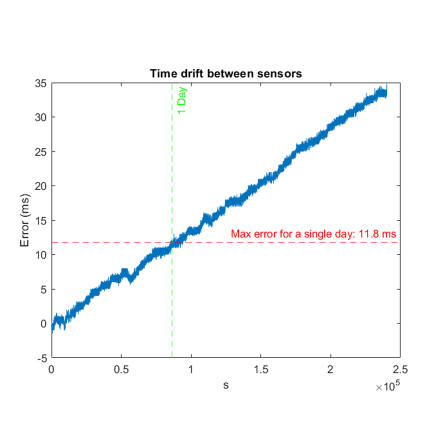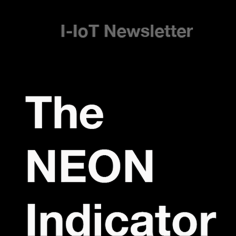Advancing Industrial Operations through Sensor Fusion Technology with NEON TimeSync
In early 2024, TWTG will elevate its NEON sensor range by integrating advanced sensor fusion technology. This significant technological update will introduce two key features: TimeSync and EventSync, both designed to enhance data accuracy and synchronization across industrial applications. Our White Paper, downloadable in PDF format, gives you fresh insights in what sensor fusion is all about and how it advances industrial operations.
1. Introduction
1.1 Overview of I-IoT in the Energy Industry
The Industrial Internet of Things (I-IoT) is revolutionizing the energy industry, transitioning it from traditional methods to advanced, data-driven operations. This white paper focuses on the pivotal role of sensor fusion technology, enhanced by Time Synchronization over the LoRaWAN network, in driving operational excellence and optimizing resource utilization.
1.2 TWTG’s Technological Approach
TWTG has played a crucial role in the I-IoT revolution, especially for energy and chemicals companies. They recognized the transformative potential of LoRaWAN technology early on and embarked on a journey to leverage it to improve operational efficiency and safety in the sector. Their approach has helped lay the foundation for transitioning traditional operational frameworks into more advanced and data-driven paradigms.
1.3 TWTG’s SolidRed I-IoT Platform and NEON Sensor Suite
Central to TWTG’s I-IoT strategy is the SolidRed I-IoT platform, a robust framework designed to facilitate seamless integration and communication between various I-IoT devices. NEON is TWTG’s LoRaWAN-based sensor range – a sophisticated sensor suite tailored to the energy industry’s specific demands. The NEON products are engineered not only for performance but also for ease of retrofitting onto existing equipment. By making previously non-intelligent equipment smart and capable of providing data to aid engineers in making informed decisions about the status of operations and future maintenance.
1.4 Future Integration of Sensor Fusion Technology in NEON Sensors
In early 2024, TWTG will elevate its NEON sensor range by integrating advanced sensor fusion technology. This significant technological update will introduce two key features:
- TimeSync and EventSync, both designed to enhance data accuracy and synchronization across industrial applications.
Ongoing, all compatible NEON sensors from TWTG will benefit from sensor fusion functionality from 2024 onwards. To extend these advancements to the existing NEON sensors already in operation, TWTG will offer these new features through software updates, ensuring that every compatible sensor benefits from the latest I-IoT technology.
1.5 TWTG Products in this White Paper
In order to demonstrate sensor fusion, NEON products assume a specialized role in this white paper. These advanced sensors and devices are utilized as the apparatus in conducting the simulations that illustrate the principles and practicality of sensor fusion. These simulations are integral to showcasing how sensor fusion can be effectively operationalized in real-world industrial contexts. The role of NEON products in these experiments is to exemplify the application and benefits of sensor fusion technology, highlighting their functionality beyond their primary operational use.
1.6 Objective of the White Paper
This white paper explores the intricacies and advantages of time synchronization for NEON sensors over the LoRaWAN network – an essential aspect of sensor fusion approach. This paper explores how this technology redefines the operational efficiency and safety standards in the energy industry and what is conceptually possible in terms of insights. Through a combination of technical analysis, case studies, and practical examples, this document will demonstrate the transformative power of synchronized sensor fusion, highlighting its potential to shape contemporary industrial operations as this sector reinvents its methodology and objectives for a future era.
2. Concept of Sensor Fusion
2.1 What is Sensor Fusion?
Sensor fusion, in its most fundamental terms, works by integrating data from multiple sensors distributed throughout a facility or system. These sensors, which can vary in type and function, collect various data points, such as temperature, pressure, vibration, and flow rates. The fusion process involves aggregating and synchronizing this data to create a unified, comprehensive view of the system’s operations.
Advanced algorithms analyze these combined data streams to identify patterns, correlations, and anomalies that might not be apparent when considering data from individual sensors in isolation. This holistic approach allows for more accurate monitoring, predictive maintenance, and decision-making. However, while sensor fusion’s functionality is straightforward, its true potential lies in creating new levels of understanding.

Venturing beyond its basic functionality, sensor fusion represents a significant leap in industrial engineering, especially in managing energy production facilities and complex operations. This technology potentially provides engineers with a comprehensive and integrated view of their entire facility, enabling them to comprehend interconnected systems and operations as a single entity for the first time.
By merging previously distinct processes and equipment, sensor fusion allows engineers to examine and understand complex relationships and dependencies. For instance, the operation of pumps in different areas can directly impact the stability of pipelines located far away, making hidden impacts and interactions visible. This comprehensive view helps engineers identify and address issues previously concealed by the complexity of separate systems. Furthermore, by integrating external environmental factors such as weather conditions, sensor fusion can allow for more informed maintenance schedules and operational decisions, which enhances efficiency and reduces downtime.
In essence, sensor fusion opens up possibilities for understanding and optimizing industrial operations. It provides engineers with previously unattainable insights and control, marking a new era in managing and maintaining industrial facilities.
3. Time Synchronization - (NEON TimeSync)
3.1 Advancing Sector I-IoT with Time Synchronization
Sensor fusion is poised to play a vital role in the future expansion of I-IoT within the sector. At its most basic, sensor fusion combines data from multiple sensors to provide a more precise, dependable, and comprehensive understanding than what would be achievable with the data from a single sensor.

At TWTG, we’ve advanced the concept of sensor fusion by creating a new functionality: Time Synchronization (or TimeSync). This innovation is a critical element for data congruency and real-time monitoring. TimeSync is highly configurable, allowing optimal balance between synchronization frequency and data accuracy. Typically, our system is set to synchronize once every day. This frequency has been chosen strategically, considering the network bandwidth and synchronization precision trade-offs. By syncing daily, we can maintain a maximum time error margin of only 11.8 milliseconds across our sensor network (See Figure 3). This level of precision is significant for effective monitoring and predictive maintenance in the energy industry and chemicals sector.

Powered by the devTimeReq of LoRaWAN, this daily synchronization ensures that sensors are accurately synchronized and operate optimally, conserving energy and network bandwidth.
3.2 Mitigating Message Collisions in Synchronized I-IoT Networks
Managing the risk of message collisions becomes essential in environments where large groups of I-IoT devices operate in synchronization. At TWTG, we have developed a technological approach to mitigate this challenge by separating the timing of measurement and the transmission of its result.
This way, when a device measures something, it doesn’t immediately send that information. Instead, a random amount of time is calculated before being sent. This approach reduces the risk of multiple devices trying to send data simultaneously. Separating the measurement and transmission events and introducing a random transmission time minimizes the likelihood of collisions. This strategy works particularly well in dense sensor networks where many devices increase the potential for collisions.
The strength of this approach lies in its simplicity and versatility – easily applied in multiple industrial environments without complex coordination mechanisms. As a result, it provides a robust and scalable solution that enhances the dependability of our I-IoT networks. This is critical for ensuring uninterrupted data flow for real-time monitoring and decision-making in the oil and gas industry.
3.3 Scheduling in Synchronized I-IoT Networks
One key feature of our solution is its Scheduling Function. Designed to provide users with enhanced control over the timing and frequency of measurements, this function reflects our commitment to delivering tailored solutions that meet the specific needs of the energy industry.
3.3.1 Precise Scheduling of Measurements
Users can schedule measurements for a specific time and day of the week. This capability is not limited to a one-time measurement; it extends to the ability to set up recurring measurements. Such precision in scheduling is crucial for operations where data needs to be collected at specific intervals or during certain operational conditions. It enables more efficient planning and better alignment with operational cycles. The Schedule Function allows users to schedule measurements for specific times and days of the week. Users can set up recurring measurements, as capability is not limited to one-time measurements. This feature is crucial for operations where data needs to be collected at specific intervals or during certain operational conditions. It enables more efficient planning and better alignment with operational cycles.
3.3.2 Minimum Value Threshold for Transmission
Another aspect of the Schedule Function is the ability to set a minimum value threshold for data transmission. This threshold helps filter out non-essential messages, such as data from machines not operating. By setting a threshold, the system only transmits data when it meets or exceeds this predefined value. This functionality is beneficial in scenarios where continuous monitoring might result in the transmission of redundant or irrelevant data, such as when machinery is turned off or operating below a certain threshold. It not only saves bandwidth but also ensures that the focus remains on critical and meaningful data.
3.4 User-friendly interface
The Schedule Function has a user-friendly interface that enables greater flexibility and efficiency in data management. It allows users to define exact parameters for data collection and transmission, enhancing sensor fusion effectiveness in I-IoT. This feature reflects our commitment to providing solutions that are not only technologically advanced but also highly adaptable to our client’s unique operational needs. The device randomly chooses an interval between two consecutive measurements and transmits its results during this time.
To read the full White Paper including the Chapter on EventSync, and to learn its Advantages, Implications and our Conclusions, please continue by opening the White Paper in PDF format here.

